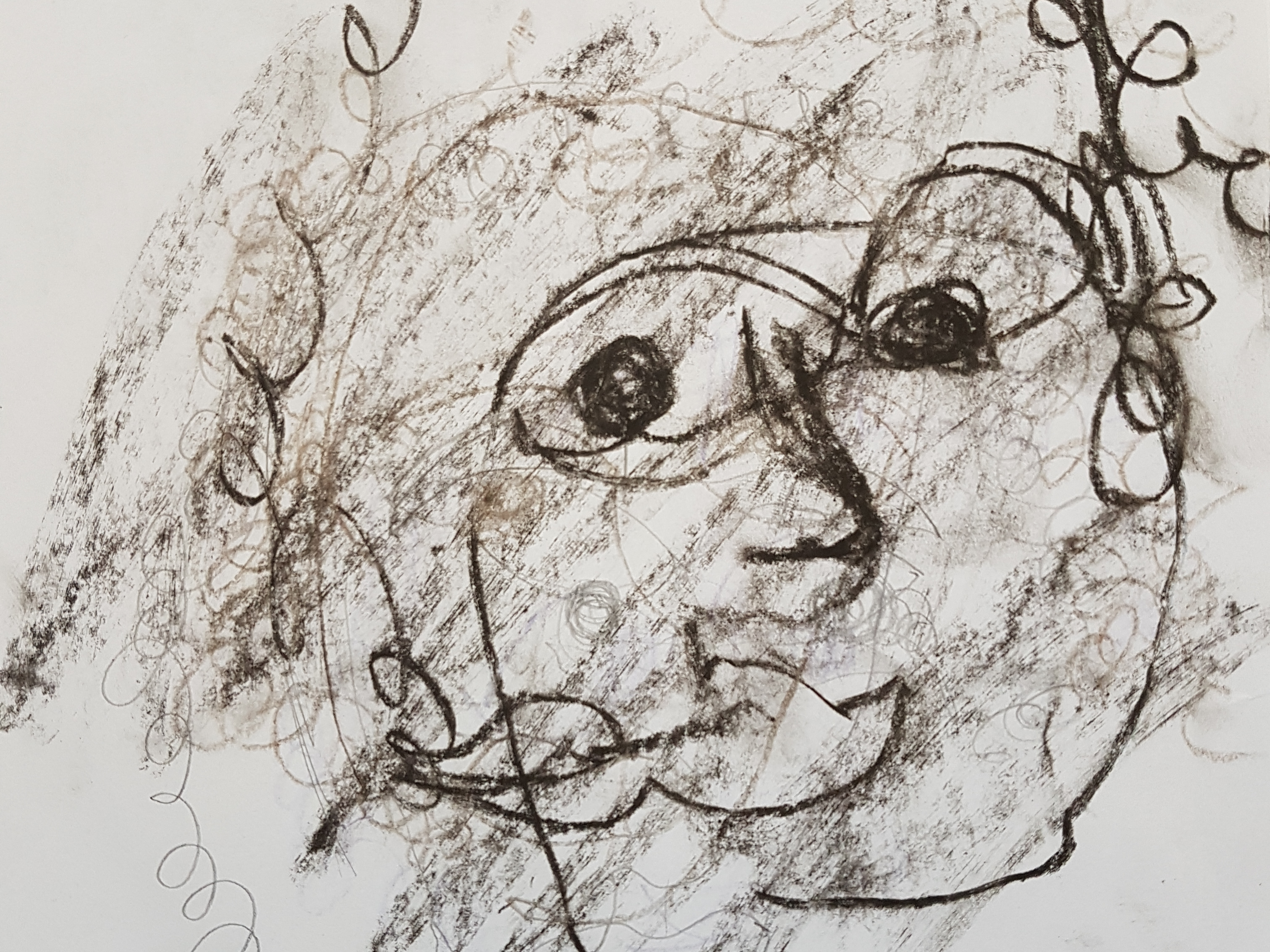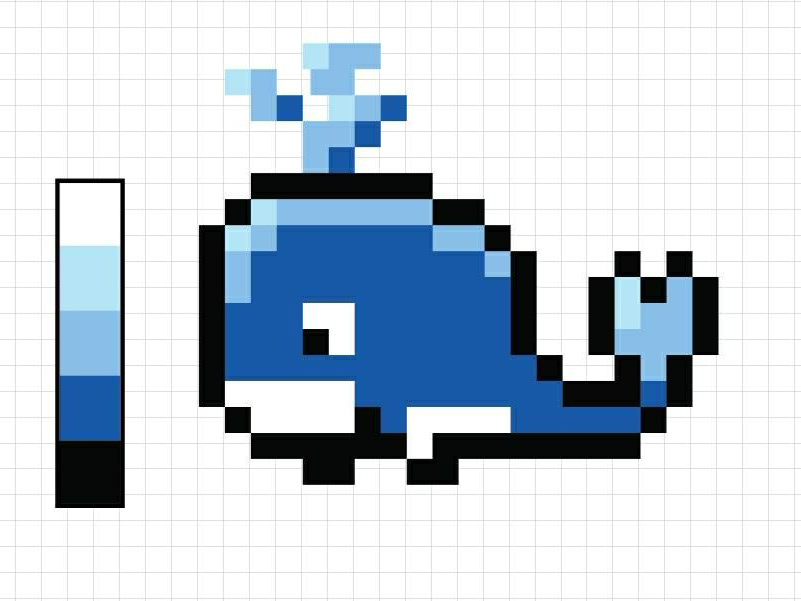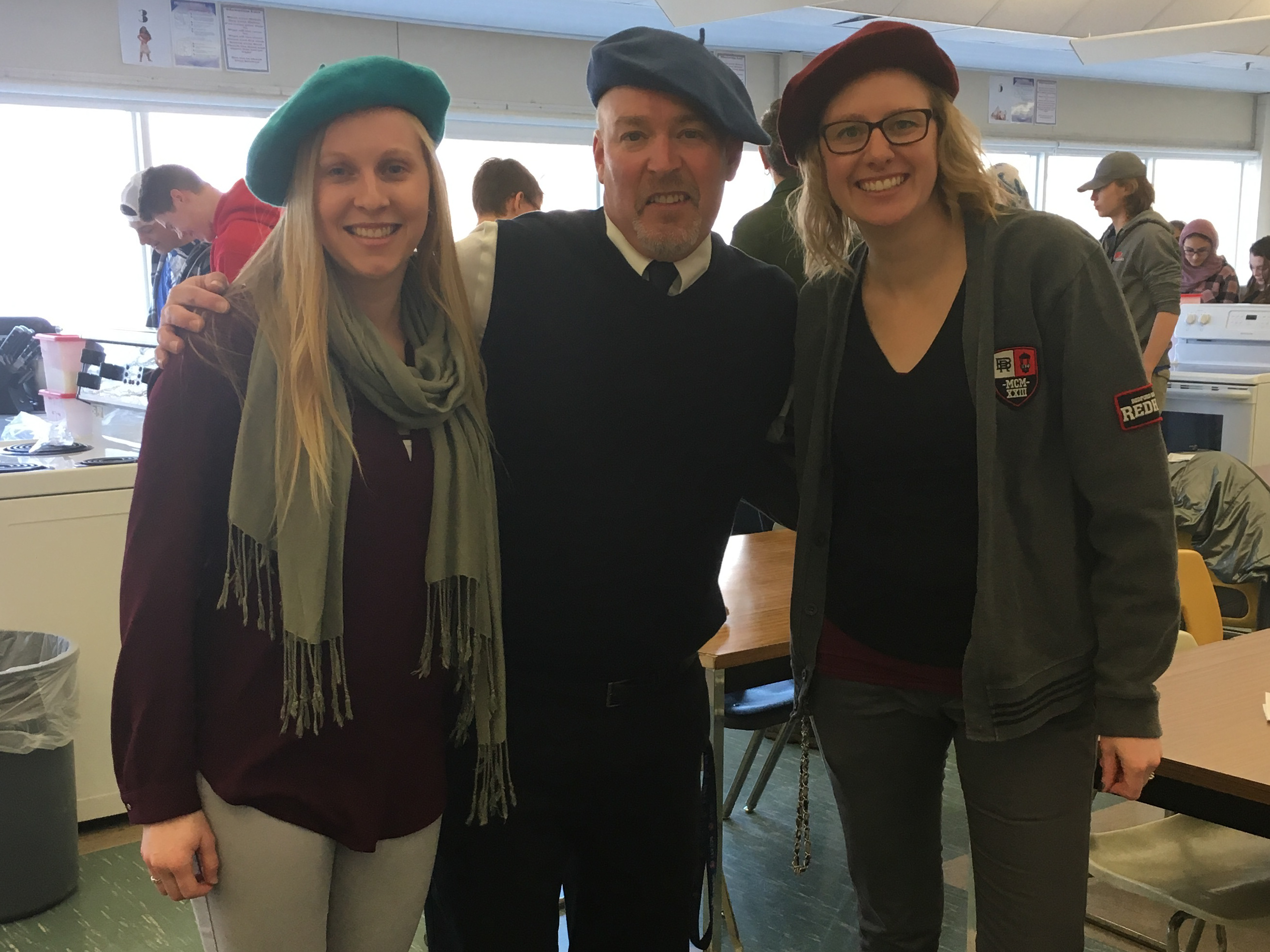Lesson Plan Title: Les mots de l’école
Date: February 16th, 2018
Subject: Core French
Grade: 10
Topic : les mots de l’école
Essential Question: Qu’est-ce les mots important dans l’école?
Materials:
les cartes (deux) – la plan d’étage principal et la plan du deuxième étage
La légende avec des numéros des salles ou les mots spécifiques pour la carte
Une liste de vocabulaire (liste des mots pour la légende)
Un crayon
What do they need to understand, know, and/or able to do?
Students will need to understand a basic level of French so that they are able to learn new words.Then during the lesson, they can simply add in the new vocabulary into the phrase and say it. The students need to be able to read the numbers and simple words on la carte (hopefully at this point they can say most of the numbers in French- if not this is good practice and by the end they will be able too).Students will need to know that they are required to speak in French as much as they can (even if it isn’t correct or doesn’t sound great) they must try.
Outcome(s):
Learning objectives for Personal and social values
Practice and reflect upon cooperative, respectful or empathetic behaviours
Work cooperatively and contribute positively in group learning activities
Choose to behave well even in those difficult situations where others do not
Develop a respect for the natural environment
Learning objectives for Numeracy
Collect and organize quantitative information into a list, table, graph or chart and analyze this information to determine a conclusion
Participate in activities which focus on real world situations
Use a variety of concrete materials to demonstrate their understanding of mathematical concepts and/or quantitative information
Learning objectives for Communication
Explore and express the purpose for and the meaning of what they are doing
Show their understanding of ideas presented by providing an alternate rephrasing, drawing a diagram, etc.
Compose questions related to material to be studied and discuss multiple responses
Synthesize ideas gleaned with prior knowledge and understanding
Learning objectives for Critical and Creative Thinking
participate in decisions around classroom management, appropriate behaviours on field trips, etc.
Learning objectives for independent learning
Derive pleasure from learning
Discover how their efforts can affect their learning
Participate in as wide a range of optional ways to learn as possible
Demonstrate their achievements through a wide range of appropriate ways
Discover what interests and/or abilities they have in learning French
Share what they have discovered on their own about a particular concept that was introduced in Core French
Cooperate with and help each other
Assessment FOR Learning (formative) Assess the students during the learning to help determine next steps.
During the lesson the students will be assessed on their general participation.Specifically I will be listening to their pronunciation of the words/numbers, their ability to try to speak regardless of pronunciation, their effort to stay with the group, and their conversations with each other (are they staying on task?). The answers that the students give to these questions will give me a very good understanding of the level that each student is at. It’ll also let me know what the students need to work more on or what has become to easy.
Assessment OF Learning (summative) Assess the students after learning to evaluate what they have learned.
The final assessment for this lesson will be the map that the students have created and labeled as we walked around the school.If the student has finished labeling the map I will be able to give a final assessment of the project.A finished map will show me that they understood what we were doing as we walked around the school and they understood the numbers and names of each classroom (which were all in French).
Motivational/Anticipatory Set (introducing topic while engaging the students)
I will introduce this lesson to the student by pulling up a map of the different floors of the school on the projector and talking about the different areas. I will tell them the rules and things we need to think about and follow as we are walking around the school. Then we all get up and start walking around the school together because it will take almost the whole class.
Main Procedures/Strategies:
The lesson will go as planned:
Attendance
Introduction of lesson (with map as visual aid)
Conversation about the rules and things we need to think about as we walk around the school
Give out maps and tell students to get a pencil or pen
Get up and leave the class so we can start the walk around the school
Walk around the school, labeling each classroom and number of room (speaking in French)
Return to class after the group has walked around the whole school
Sit in desks and start going over the names of each class as listed on the map (go student by student down the row asking them if they know) if they didn’t get that one their peers may help them out
Finish class by collecting the maps from the students
Adaptations/Differentiation:
The adaptations and differentiations for this class will be:
Students not walking around if they can not – they could stay in class and label the map from memory and then compare to a friend who went and walked around
Students may work together if they are struggling with the language and help each other
Students could take extra materials along with them such as a number sheet or larger vocabulary list and translation list if needed
The students who find this task to easy may be partnered up with a struggling student and they would also be given the option to create sentences and ask questions about what rooms are around us… etc.
Closing of lesson:
The lesson will close by going over the map while each student gets the opportunity to say the name and number of one room.Once the map has been gone over together in class the map will be handed in and class will be done.
Lesson Plan Title: Regular ER, IR, and RE verbs
Date: February 13th, 2018
Subject: Core French
Grade:10
Topic: ER, IR, and RE verbs
Essential Question: How do you conjugate regular ER, IR, and RE verbs?
Materials: Verb sheet (list of common verbs – not translated), sheet of common ER, IR, and RE verbs fully translated, mini white boards, markers, erasers
What do they need to understand, know, and/or able to do?
They need to understand how to use basic French vocabulary and have an understanding of the POI’s (Je, Tu, Il/Elle, Nous, Vous, Ils/Elles).
Outcome(s):
Outcomes for the lesson are: understanding of three different verb groups, understanding of three different verb group endings, understanding of POI’s, conjugation of the three verb groups, vocabulary of verbs from the three groups, automatic response to conjugation (memorization of POI’s, verbs, spelling, verb endings, of three groups).
Assessment FOR Learning (formative) Assess the students during the learning to help determine next steps.
The assessment that I will do of students during this lesson will be during the time when we use the white boards.I will ask the students either in English or in French to translate/conjugate a verb for me (ex. I go = Je vais, nous finnissons = we finish).As the students write the answers onto their board they will hold it up and get an immediate response from the teacher about their answer (if it is correct or not correct and then what to fix- is it the verb or the pronom objet indirect).
Assessment OF Learning (summative) Assess the students after learning to evaluate what they have learned.
I will assess the students at the end of the lesson when I collect the worksheet that they have been working on. The document has a list of verbs (in sentences) to conjugate that the students will be given during class to work on. At the end of the class the sheets will be handed in so that I can mark them and see where the students are at with their comprehension of ER, IR, and RE French verbs.This will be a lesson that spans multiple days depending on the student’s initial level of comprehension of the verb conjugations.Verb conjugations are difficult to comprehend in just one lesson, so the summative assessment will be at the end of the day (with the assignment sheet) and at the end of the week with a small test of the specific verbs that were worked on.Students will be expected to have worked on the verbs at home and practiced them.
Motivational/Anticipatory Set (introducing topic while engaging the students)
The motivational set for this lesson was the use of a program called Professor. This program is computer based and designed to be used as a practice or testing tool for students.The program randomly generates sentences with whatever preset of instructions that you give it (ex. 10 sentences with regular ER verbs, 5 sentences with regular IR verbs, etc.).The program is very helpful for students because it gets them engaged with what they were previously doing, and it can easily be hooked up to the projector.It also allows the students and the teacher to see where they are at with that specific grammar. This activity is quick and enjoyable (the sentences are usually funny) and it gets them into their desks ready to work.
Main Procedures/Strategies:
This lesson will commence with the motivational set and then as the students are feeling comfortable with the verbs/vocabulary from their previous lesson we will move into the core of the lesson: ER, IR, and RE verbs.I will write up the Pronom Objet Indirects on the board (Je, Tu, Il/Elle, Nous, Vous, Ils/Elles) and then I will draw three vertical columns next to the POI’s on the board and write up three very common verbs (one from each category ER, IR, and RE) and I will begin to conjugate the verbs.I will start with ER because they are the most common and easiest to learn.I will explain how this type of verb is conjugated, you remove the ER ending and then add the appropriate ending based on the POI.After the students have grasped the ER verbs we will practice a couple of times with the white boards and then we will move onto IR verbs, continuing the same pattern and finally finishing with RE verbs.White boards will be again used at the end of class to continue practicing the verb conjugations.It is extremely important for students to memorize the endings for each verb group and each POI so that it becomes an automatic response (or as close to automatic as possible). Before the end of the lesson (wherever it fits the best) go over the vocabulary list together and translate the verbs having the students write the correct translation next to the verb, so they have a list of commonly used verbs.
Adaptations/Differentiation:
There will not be a lot of adaptation or differentiation for this lesson because it is so basic and a requirement for students to learn in a Core French class. The adaptation will come into effect with the speed of the lesson, some students will require a slower more explained or repeated lesson, but some will not. So, the lesson will be shifting and changing during the teaching based on how the students are doing with the material.I may need to go back and repeat how to add and ending to each POI for each verb group or I may be able to move forward and teach the students a whole bunch of new verbs to conjugate. The lesson will be as adapted as the students require.For my class I know that they will have a good grasp of the verb conjugations, so I will be able to get through some of the vocabulary list of the other verbs in those groups.
Closing of lesson:
The lesson will close with the students working with the white boards again and practicing their conjugations of the verbs we have just learned.We will work on this as much as possible because the students need to gain this as an automatic response, so when they look at these verbs groups they can immediately know conjugations. Students will wrap up knowing the next day that we will pull out the white boards and keep working on the verb conjugations.
Lesson Plan Title: Histoire de l'art français –
Blind Contour Drawing – Le Visage
Date: March 13/14, 2018
Subject: Core French
Grade: 9, 10, 11, 12
Topic: Histoire de l'art français
Essential Question: Qui-est-ce les artistes Français ?
Materials: power point, smart board, white board, markers, erasers, white paper, pencils, pencil crayons, markers, charcoal, tape, cleaner for tables, paper towels
What do they need to understand, know, and/or able to do?
Students will need to understand basic French vocabulary and a basic understanding of the historical time periods will be a help (the older grades may have a greater understanding of this).
Students should be able to say most numbers, names, and words on the power point with proper French pronunciation.
Outcome(s):
The students will develop a cultural connection to French history, specifically art. This information can be added to their prior knowledge of European history to develop a better understanding of history.
Students will learn basic drawing techniques
Students will learn about some of the most famous French artists
Students will gain an understanding of the different classical periods of art in relation to France (but other countries will be discussed when relevant)
Students will create portraits for one another – working together in a relaxed environment will create a community feeling (this is extremely important in language classes)
Assessment FOR Learning (formative) Assess the students during the learning to help determine next steps.
I will assess the students in a formative way during the lesson.As I am going through the power point I will ask students to read out the dates that the artist was born and when they died (in a full sentence).I will also ask students to tell me which era they think the piece of art we are looking at is from based on the prior slides where I explained how each era is classified (Renaissance era is about this… l’art modern is about this… etc.). The students will be able to make an accurate guess if they were listening.After each slide the students will be asked to draw something that relates to the image they are viewing (this will make them more comfortable with drawing by the end of the lesson so that they can create a portrait of their partner.
Each grade will be assessed slightly differently. I have a higher expectation level for the grade 11/12’s regarding their level of historical knowledge and pronunciation of the French numbers and words from the slides.The grade 9/10’s will focus more on the simple words such as the French words of the face and the simple numbers.
Assessment OF Learning (summative) Assess the students after learning to evaluate what they have learned.
The summative assessment for this lesson will take place at the end of the two days when the students have handed in their portraits of each other and labeled them with the appropriate words. The students will be assessed on effort not skill of the drawing (this is a blind contour style drawing meaning the students aren’t looking as they draw, no skill is involved in the details of the drawing).A greater portion of the assessment will be formative over summative.
Motivational/Anticipatory Set (introducing topic while engaging the students)
The motivational set for this lesson will be the intro to the topic with the PowerPoint.The students will be shown images of famous pieces of art and then given paper and pencils. This will bring them into the lesson and get them excited, they will also be able to start drawing/doodling.
Main Procedures/Strategies:
The lesson will go as follows:
Students will be introduced to French art history and the different time periods of art in France.
The eras will be discussed in detail explaining what was happening at that time is history, what was happening in the art world, what type of art was being created (style) – (more detail will be discussed in the older grades)
The 10 most famous French artists will be discussed individually showing one of their most famous works of art and their portrait. The importance of portraits will be discussed and the idea of drawing a portrait of someone else will be discussed.
The students will draw something found in each piece of art (they will be given a few minutes to do this each time).
Students will be shown a slide showing a picture of a face which will include the names of the body parts in French. We will go over the words as a group in a “repeat after me” style.
After all the artists (and face slide) have been talked about the portrait assignment will be introduced.
Students will choose a partner, put two chairs around one desk (opposite from each other), get a new piece of paper and a pencil.
Students will tape the paper to the desk and commence drawing without looking at their piece of paper as they draw. They will instead stare at their partner and draw without looking or lifting off their pencil off the piece of paper.
After each student has done two pencil drawings they will chose which one they like more.
Then they will pick two different pencil crayons and repeat the same process (no looking and no lifting their pencil) over top of the initial pencil drawing, this will create another layer to the image and add depth.
Once the image has three layers drawn (one pencil and two pencil crayon) the final layer will come with from drawing in the exact same way over the other three layers without looking with a piece of black charcoal.
This final layer will create a lot of depth and add stronger detail to the lines on the page.
Closing of lesson:
The lesson will close with the students finishing up their projects.They will work together until they are finished and then show each the completed work.Students will discuss the portraits with each other and talk about what they like.If there is extra time students will have the opportunity to come up to the front of the class and show their portraits to the rest of the class (again there won’t be any worry or fear because every student drew their portrait without looking).





